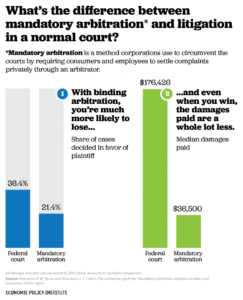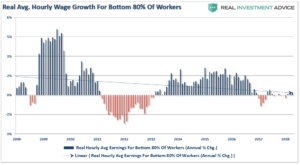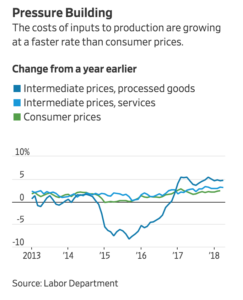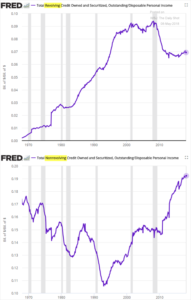
Student debt has soared to $1.4 trillion in the last month according to the Federal Reserve. Now millennials are faced with a combination of soaring student debt and high home prices are giving up on owning a home.
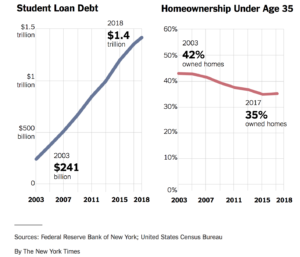
Sources: Federal Reserve Bank of New York, US Census Bureau, New York Times – 5/29/18
In 2003, 42 % of people under age 35 owned a home now only 35 % own a home. The dream of owning a home is slipping away as our society allows the rich continue to enjoy huge tax reductions in the most recent tax bill, with continuous lack of state funding for colleges and universities and then a paucity of forgiveness programs for graduates. The lack of household formations, now at a low point since the Great Recession means that durable orders will fall and sure enough durables (ie. appliances, furniture, cars) orders have fallen recently. As millennials and working class are squeezed between stagnant wages and rents, college debt, car loan payments, and credit card payments:
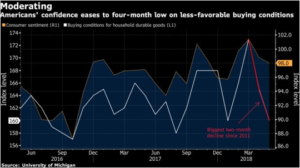
Source: Bloomberg, The Wall Street Journal, The Daily Shot – 5/29/18
Next Steps:
We saw this problem getting worse in our blog last April and suggested several solutions related to student debt forgiveness and interest reduction programs:
“As part of the spending bill that Congress passed last month, $350 million was allocated for a fix it forgiveness program for some types of student loans. Senator Elizabeth Warren has been surveying the issue and individuals trying to take advantage of the provisions where she found that it was quite complex, answers were in complete from the Department of Education and work still needed to be done to setup the process. She found many firefighters and teachers having a difficult time getting into the program. Prior to passage of the spending bill Senators Whitehouse and Kaine wrote a bill to setup a student debt forgiveness program and get it funded, their bill set the stage for Democrats to push for provisions of the bill to be included in the omnibus spending bill.
This solution is still not enough compared to the huge issue of $1.49 trillion outstanding placing an anchor of debt on our young people when they need to be investing in starting their families and careers and buying homes. In blog of February 16th in our archives, we review an idea to cancel all student debt. We like the idea moving forward, yet recommend that forgiveness be done in stages, by reducing interest rates, offering Heartland Service, providing a universal national service option and corporate sponsorship of an internship by the student.”
Our ideas stand today, as they did six weeks ago as Congress, the Elite and Corporate Nation States continue to ignore the fact that we are not doing right by our young people entering the economy and starting their careers.


